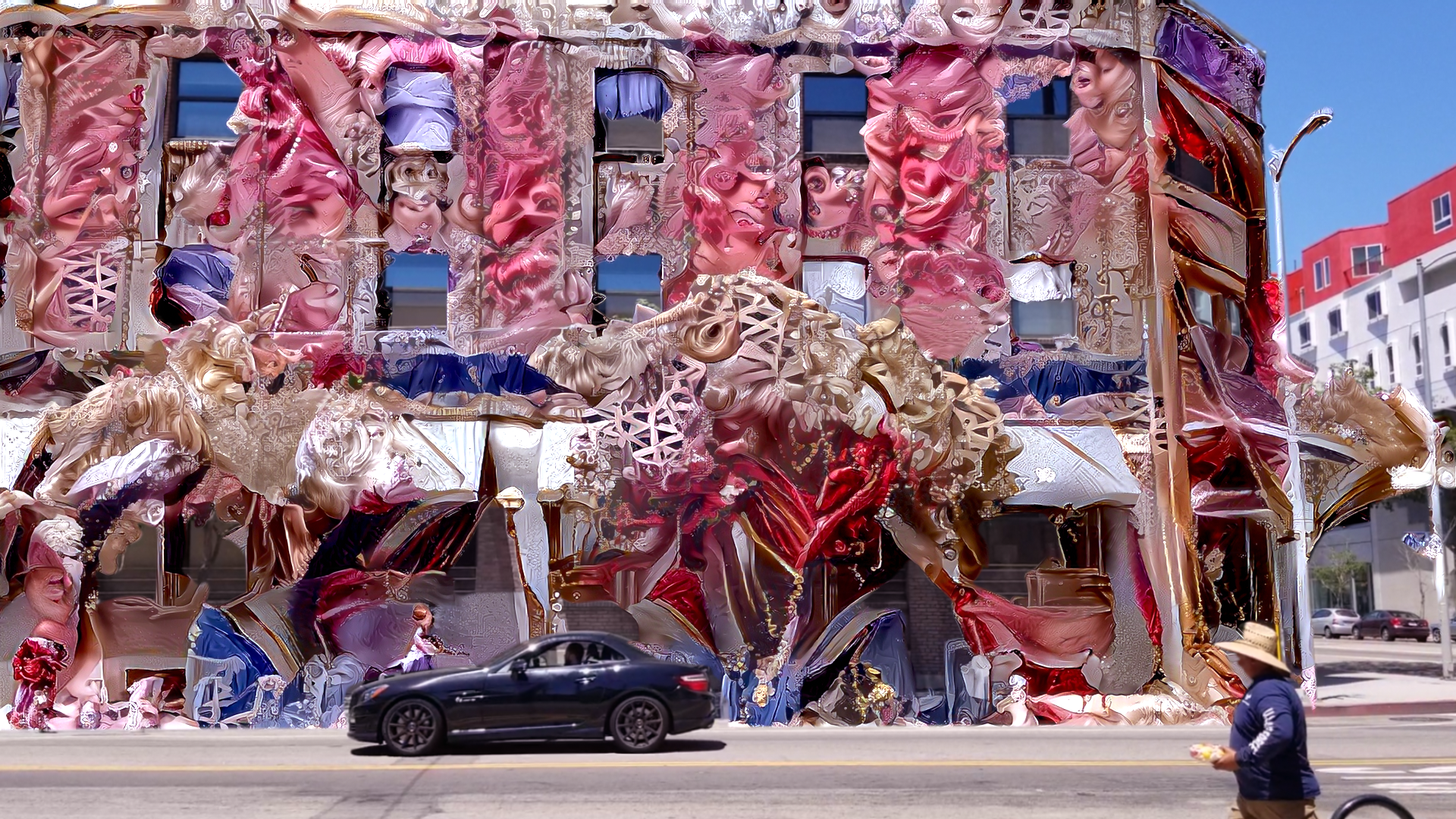Leaky L.A.
The academic journal published by SCI-Arc in Los Angeles, Issue 14 Fall/Winter 2017
In the Arts District in Downtown Los Angeles, at the intersection of East 3rd Street and South Santa Fe Avenue, there is a leak. Stuff is dripping. Things are bleeding out. These leaks transgress the binary between physical and digital space. At this corner rests three buildings: the Southern California Institute of Architecture, the furniture showroom of Hammer and Spear, and a secondary entrance to the residential block of One Santa Fe. Most urban corners relegate architecture to the background, but this particular one leaks.
![]()
![]()
This corner — designed by machine and human vision — exists in an immersive space. Different types of representations overlap. There are point clouds, 3D scanned meshes, 2D spherical photographs, and ‘real’ footage. Chunks of these buildings are transformed, while some parts remain untouched. The resulting whole is still quite familiar, as the original building features are recognizable; however the closer you look, the less ordinary it becomes. Windows frames are twisted. Columns are draped. The fruit vendor that usually stands on East 3rd Street is now harmoniously flattened onto SCI-Arc’s facade. The aesthetic bleeds onto the sidewalk making it part of the building. Light poles, trees, garbage cans, among other stuff are smoothly integrated, while rococo shapes transform the buildings’ edges. Two-dimensional wall graffiti is spatialized; its graphics blend seamlessly with the walls’ skin. The building corners morph into bizarre combinations of human faces and pieces of jewelry.
For the AI it is all data; humans, objects, and plants are the same. It reads them as shapes, outlines, depths, contrasts, and sharpness. It fuses this data into a leaky assembly. This AI in particular uses extravagant rococo images as visual features. Then they are scaled, and composed depending on recognizable patterns of the original building’s image. The result is somewhere between all these different images.
Multiple forms of representation bleed into the mundane. The result is an instance of leaking between the digital and the physical world. Machine vision aesthetics reveal reality as a fragile construct. Reality is no longer constructed only by humans, so a new form of attention is required. Now that the tools to blur the line between virtuality and physicality are getting better, it is time to embrace the aesthetics of these technologies. Designers are empowered to construct images, narratives, and new possibilities of world-building. This exploration into a reality where multiple representations coexist, opens a larger discussion of presumed standards of aesthetics. Leakiness transgresses political and economic constructs by being inclusive. It is an aesthetic of fluidity, and is specific to technology. The binary between physical and digital is no longer; rather they coexist.
Leakiness influences the city as well as its citizens. We are all conscious of the leakage created by both humans, and machines. This new form of attention produces a fashionable notion of flaneur. Leaking digital aesthetics into the mundane prolongs the visual experience of an ordinary walk around the block. The flaneur contemplates the leak extensively, enabling critical thinking. A leak is a fluid form of critical thought, it demands attention. Now, when walking around the Arts District in Downtown Los Angeles — at the intersection of East 3rd Street and South Santa Fe Avenue — all I see are leaks.
![]()
![]()
![]()
![]()
![]()
![]()
![]()
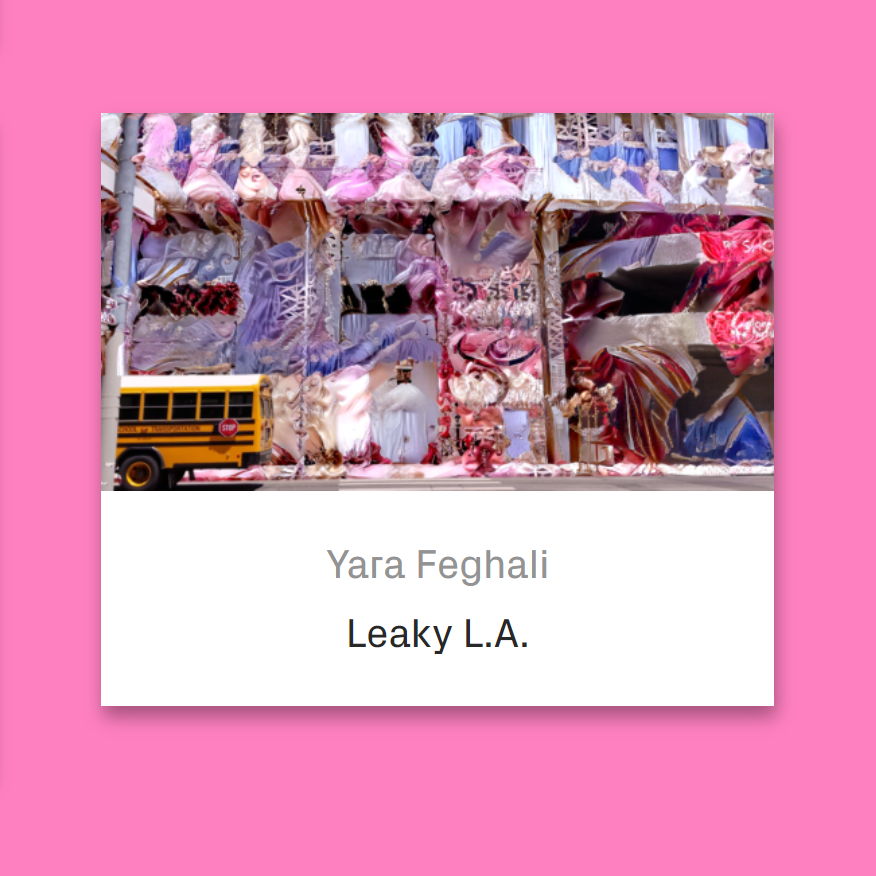

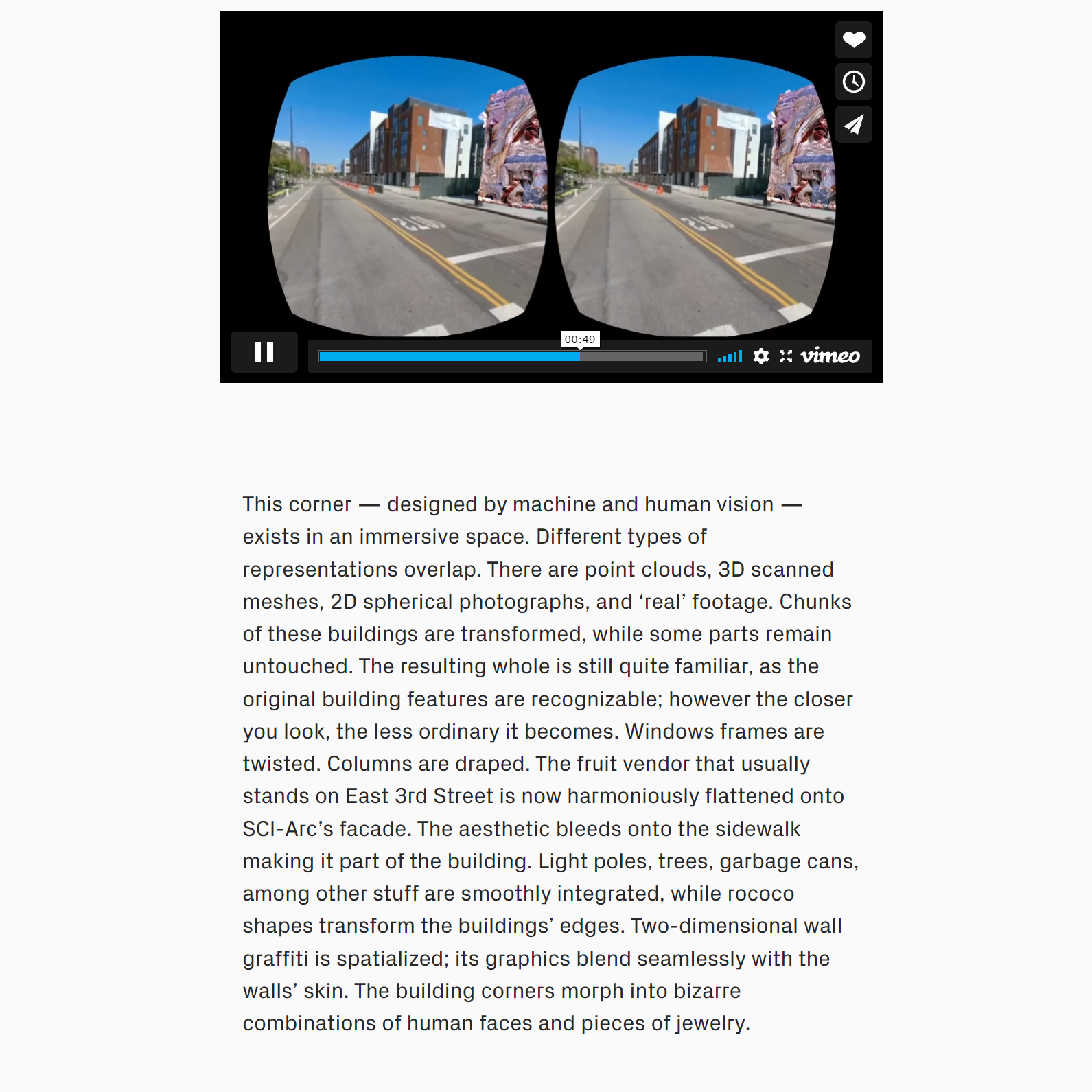
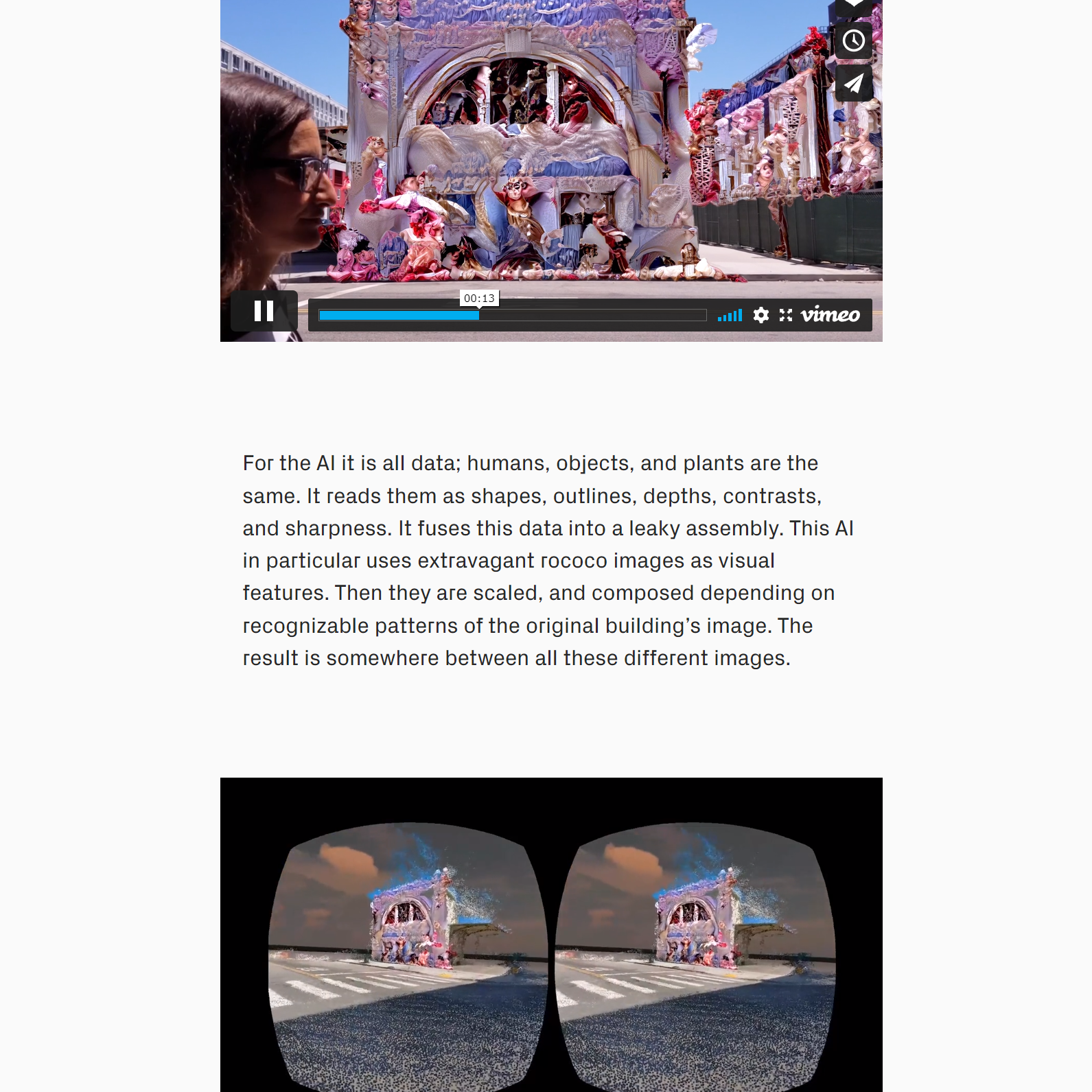
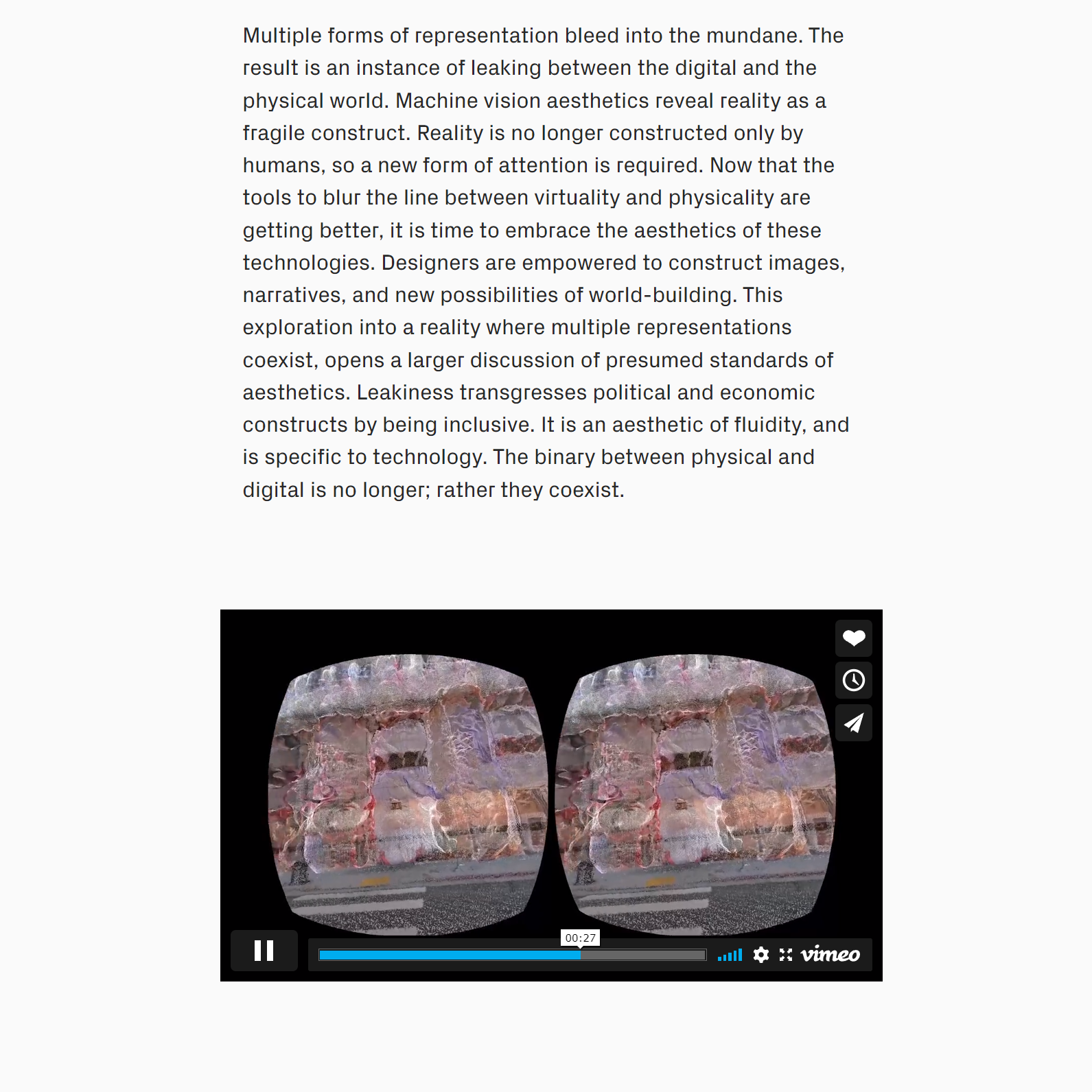
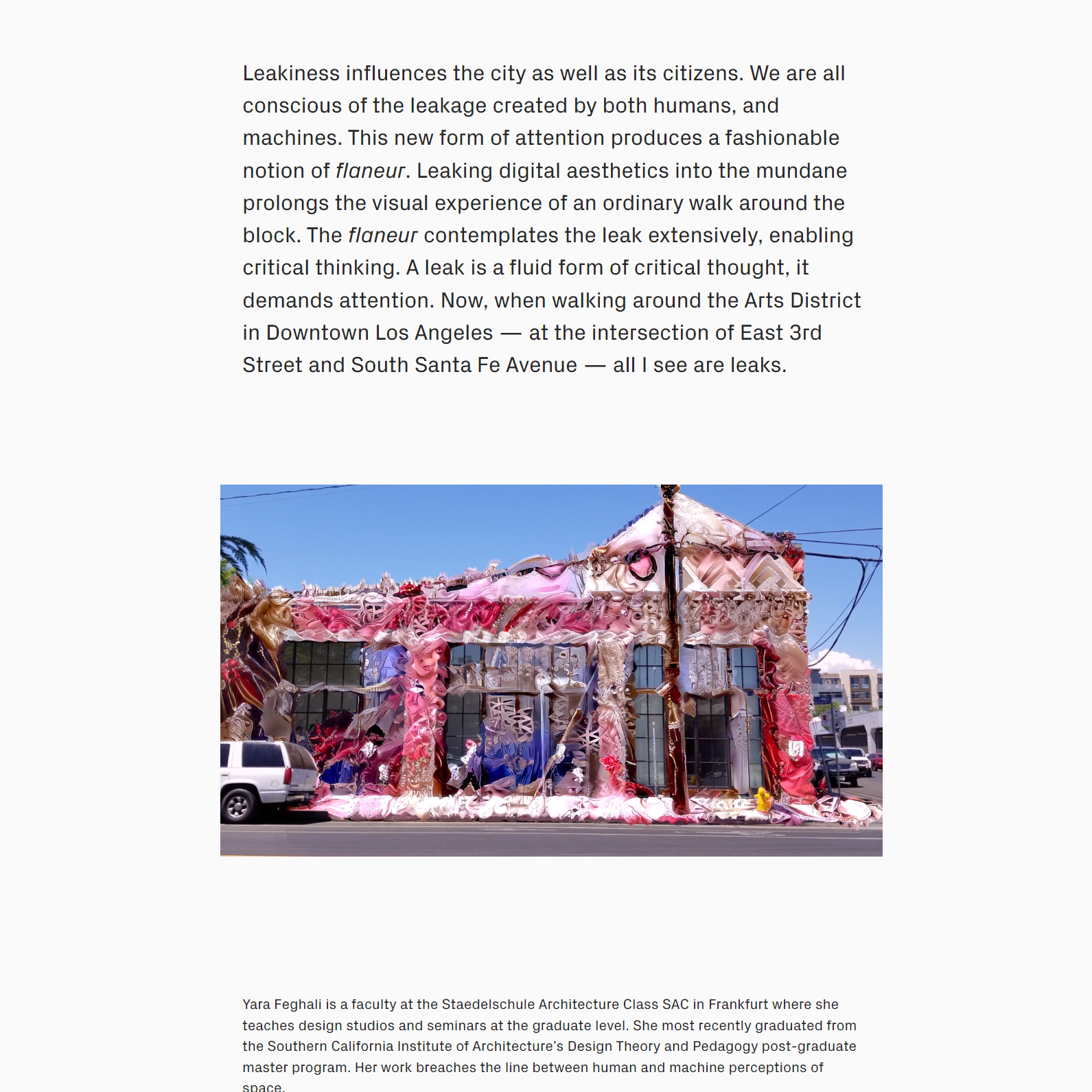

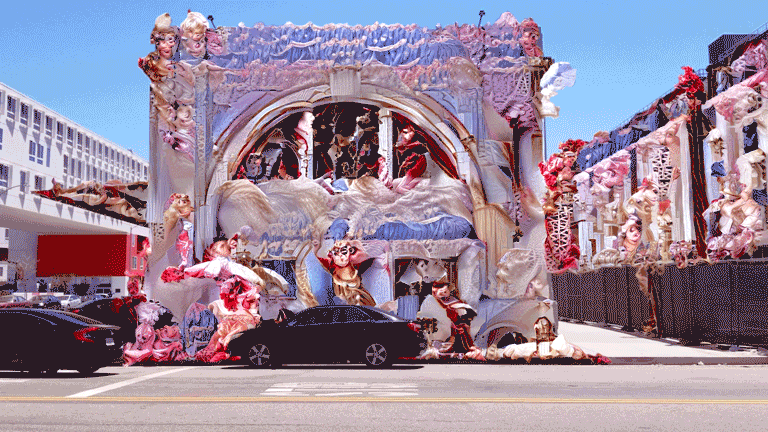
![]()
![]()
![]()


